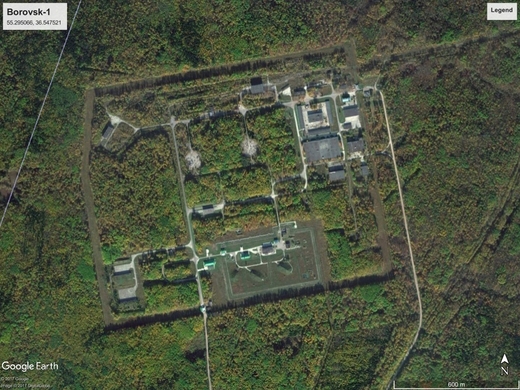This map above shows the structure of nuclear weapon storage sites in Russia. Or, more correctly, it shows units of the 12th Main Directorate that maintain nuclear weapon storage facilities. What was once a very large infrastructure now appears to include 12 national-level facilities (large red dots) and an estimated 35 base-level facilities. (This map can be difficult to read. Here is a larger one.)
More details about the facilities are in the UNIDIR research report "Lock them Up: Zero-deployed Non-strategic Nuclear Weapons in Europe", which was completed earlier this year. (UPDATE: For an important update regarding weapon handling procedures, see this note, "Non-strategic weapons storage and deployment procedures in Russia") The report also lists locations of NATO bases in Europe that host U.S. weapons. The idea of the research project that produced the report was to look into a possibility of an arrangement that would transfer all non-strategic nuclear weapons to central storage facilities (those big red dots). Russia, in fact, has long maintained that it has done just that, although it never specified that it's the national-level facilities that it considers "central." We have found that the "zero-deployed" arrangement is entirely feasible. Its key element is that we would only verify the absence of nuclear weapons at specified sites and never have to have access to weapons. This would make verification much easier than counting the number of non-strategic weapons in storage, as most proposals advocate. Please read the report for a more detailed discussion.
Back to the Russian storage sites. Until 2009, the base-level facilities were assigned to individual services, but now all of them are in the 12th Main Directorate. However, they still bear marks of their former affiliation. Badges of individual units were very helpful in the process. Also, with a few exceptions, it is relatively easy to identify the units that a storage facility is supposed to service.
There are a couple of outliers, though - the site in Shaykovka, located near a long-range aviation airbase, appears to be subordinated to the Strategic Rocket Forces. There are two "engineering units" - Khabarovsk-41, located near the Khabarovsk-47/Korfovsky national-level site, and Chita-46, co-located with the Gornyy base-level storage. The mission of Gornyy is not entirely clear - it is technically assigned to the air force, but there is no air base there. It used to be a Strategic Rocket Forces site, but that was quite some time ago.
Storage facilities are fairly easy to identify in most cases, although not always - for some units we can only be certain of the location of the headquarters. I got some flack for putting all this information together, but that was a conscious decision to do so. Yes, security of these sites is important. But those who are entrusted with protecting these sites should never ever assume that their facilities are invisible. Because they are out there in the open.
I must also admit that the list of storage sites in the report is incomplete. We just missed the Borovsk-1 facility that stores nuclear weapons for interceptors of the Moscow missile defense. This does not change any conclusions in our report, but for the sake of completeness, here is the site:

I've been told that we may have missed one or two more. I think it is unlikely, but it is possible. Leave a comment or send me a note if you know what is missing.
UPDATE: I should note that the idea of removing non-strategic nuclear weapons to central storage is, of course, not new. It's been discussed ever since Russia declared that all its weapons are withdrawn to central storage sites. The idea was discussed by a number of authors. For example, Rose Gottemoeller wrote about it in her "Eliminating Short-Range Nuclear Weapons Designed to Be Forward Deployed," in Reykjavik Revisited: Steps Toward a World Free of Nuclear Weapons: Complete Report of 2007 Hoover Institution Conference, ed. George P. Shultz et al. (Hoover Press, 2013). Alexey Arbatov had a very detailed discussion of the proposal in this chapter "A Russian Perspective on the Challenge of U.S., NATO, and Russian Non-Strategic Nuclear Weapons," in Reducing Nuclear Risks in Europe: A Framework for Action, ed. Steve Andreasen and Isabelle Williams (NTI, 2011).

Post a comment